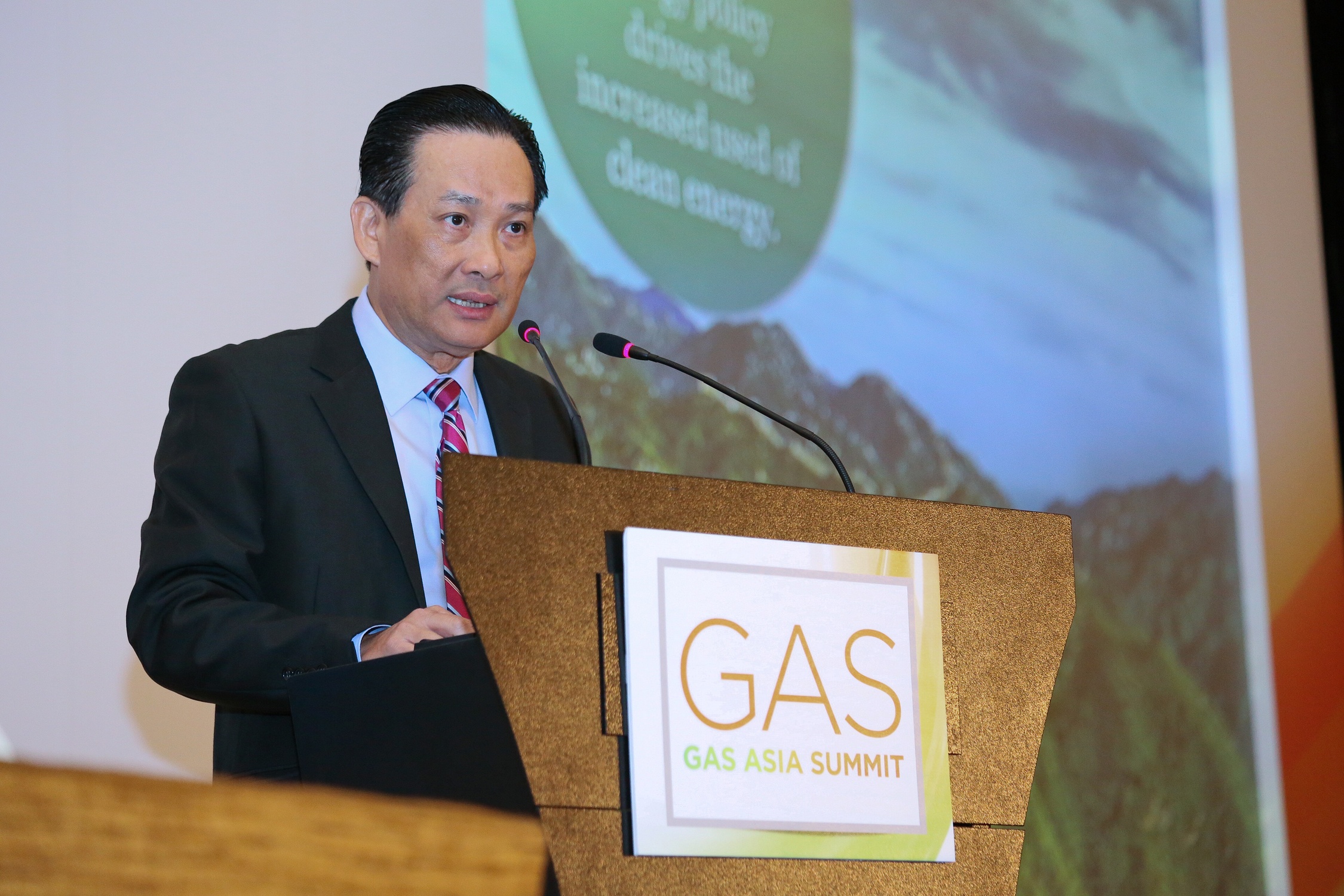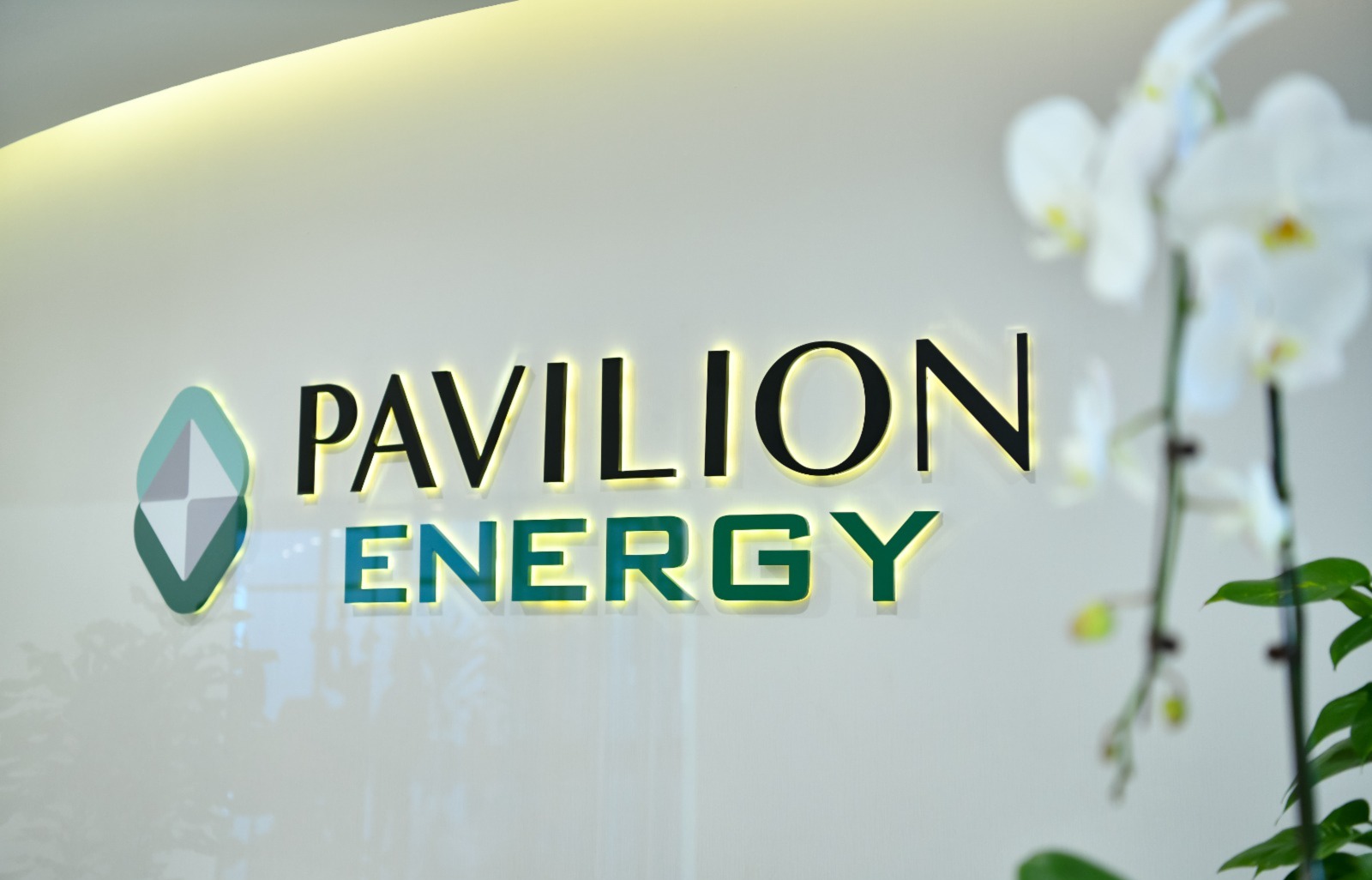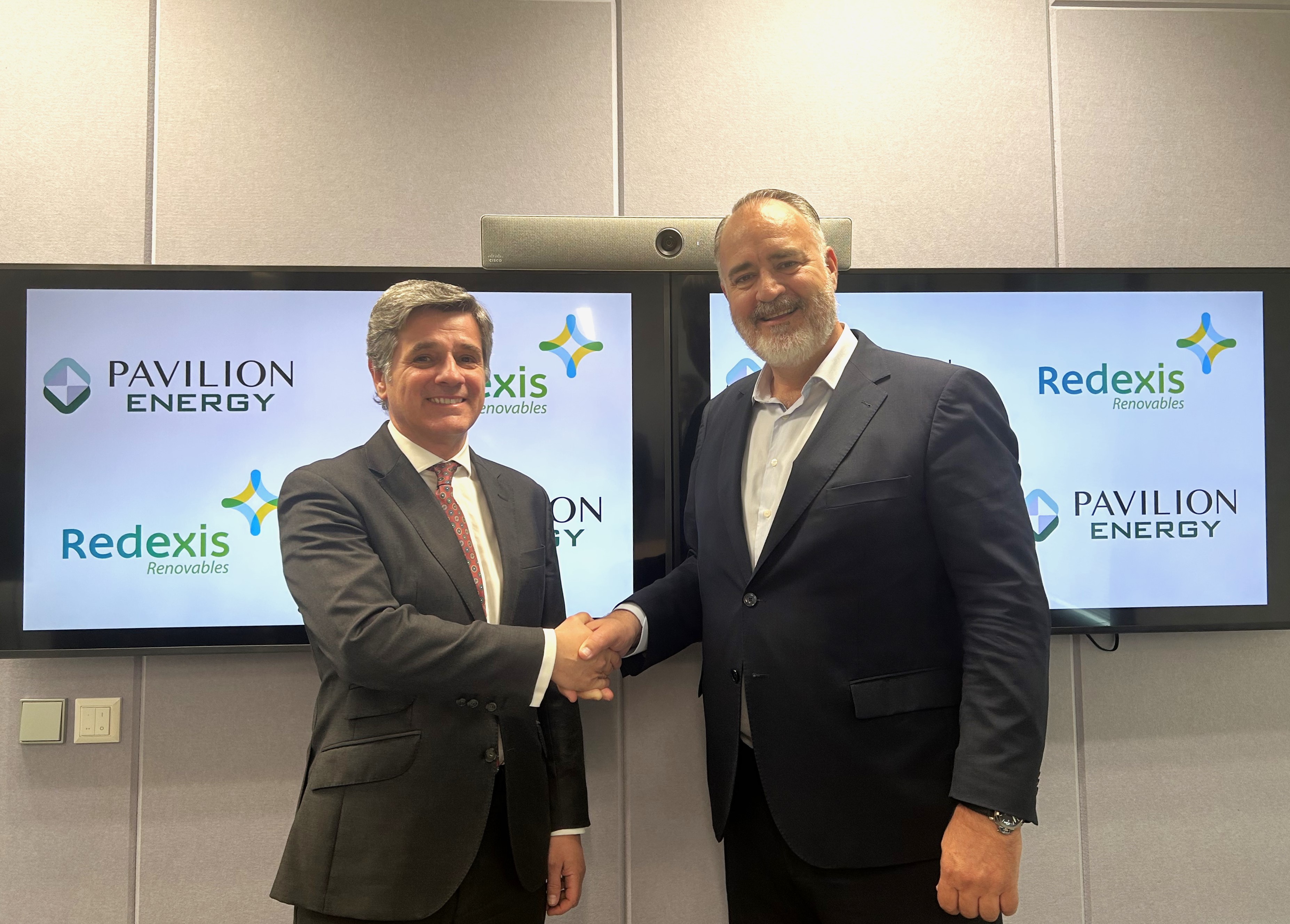
Speech at the 3rd Annual Gas Asia Summit by Mr Seah Moon Ming, Group Chief Executive Officer, Pavilion Energy Pte Ltd.
Minister Iswaran, distinguished guests, ladies and gentlemen.
Good morning.
Let me begin with something fundamental and basic for us all. Apart from air, there are three essential needs of mankind - food, water and energy. We use energy to filter and purify the water we drink. We use energy and water to produce the food we eat. This interconnection between food, water, and energy stresses how important energy is to us, to human development and civilization. Today, various energy sources exist, and the role of natural gas as a clean energy fuel is becoming more critical in the future energy mix - as countries and governments come to realize the importance of balancing economic and environmental objectives. With its fast-growing energy needs, Asia is playing a pivotal role in the global demand for LNG.
LNG's Global Potential
In China, we see a promising picture for the use of natural gas as China's energy policy drives the increased use of clean energy.
The National Development & Reform Commission (NDRC) is targeting for renewable energy to form 15% of the overall energy mix by 2020. The total natural gas demand would be about 250 Million tonnes per annum (Mtpa) in 2020. We expect the use of nuclear energy to go hand-in-hand with natural gas use. The Chinese Premier had visited Moscow earlier last month to secure collaborations in both nuclear energy and natural gas.
China's gas demand was 120 Mtpa last year. LNG imports in the first half of 2014 increased by nearly 25% compared to the same period last year. The number of Chinese LNG import terminals have also increased. Today, China has a total of 10 import terminals, with a combined capacity of more than 35 Mtpa - and more are being planned and built.
With the recent policy measures introduced by the China Central Government to curb pollution and to displace some coal usage, it will not be hard for China to achieve 10% gas usage over the next 10 years. This is a conservative level of gas consumption compared to the 22% average in OECD countries. This 10% gas consumption translates to about 50 Mtpa of imported LNG, after discounting pipeline gas and domestic unconventionals - making China one of the biggest LNG markets in the world.
In my years of interacting and working with the Chinese, one thing I have learnt is the sheer determination and execution 'muscle' of the Chinese Government - they call it "超强 执行 力". What they say, they will surely do. During the People's Congress in March this year, Premier Li Keqiang stated that "we will resolutely declare war against pollution". In September 2014, the State Council approved NDRC's national plan for coping with climate change with a target to cut 40 to 45% off the carbon emission intensity by 2020, based on the carbon emission levels from 2005. Compared with 2005, the carbon emission intensity in China has already dropped by 28.5% in 2013.
What does this mean for international LNG suppliers? I think it is positive. China knows that it needs to procure more LNG volumes in order to meet its growing gas demands which are underpinned by an urgent clean energy agenda. It is therefore making it commercially sustainable for more Chinese LNG importers to do so. For instance, the NDRC has been raising the prices of city gate gas, so that the price of domestic gas supply better reflects the supply from the international market, and makes imported LNG more competitive for domestic use.
At the same time, international LNG suppliers should also pay attention to the 'loud noises' coming from China and North Asia, about the "unfair Asia premium". We are hearing calls for North Asian buyers to form a regional "buyers alliance" to create better bargaining power and reduce overall LNG procurement costs. While the sudden drop in oil price has made the price of LNG relatively cheaper, this is expected to be temporary.
The recent announcement of the alliance between Japan's two largest LNG consumers, Tokyo Electric (or Tepco) and Chubu Electric, is a major step towards a similar direction to boost purchasing power through tie-ups among rivals. Together, Tepco and Chubu Electric are responsible for nearly half of Japan's total LNG import and will purchase about 35 to 40 Mtpa of LNG. Pavilion Energy is also looking at possible collaboration on joint procurement of LNG supply and shipping capacity optimization opportunities with Chubu Electric Power.
The traditional Asian "JKT" LNG importers - Japan, South Korea and Taiwan, will continue to be heavy energy importers and are finding ways to reduce the over-bearing procurement costs. Japan is currently the world's largest LNG import and accounts for about 30% of global LNG demand. The high fuel cost has taken a toll on Japan trade balance, turning a trade surplus of US $ 60 billion to a trade deficit of US $ 110 billion between 2010 and 2013. While this has pushed Japan to work on getting its nuclear power generation capacity back on -track, this will take time. Significant effort and resources will also be required for retrofits, before some of these nuclear plants can be returned to service.
South Korea, second behind Japan in terms of global LNG import, saw a similar situation with LNG demand having increased since November 2012, following nuclear plant shutdowns due to safety concerns on reactor parts.
Here in Singapore, we are looking to expand LNG imports beyond the initial 3 Mtpa to meet longer-term energy requirements. Other Asian countries like Bangladesh, Vietnam and the Philippines have also begun to source and import LNG. We can expect LNG demand from Singapore, Thailand, Philippines, Indonesia and Vietnam to reach a combined demand of 42 Mtpa in 10 years' time. This year, we saw Papua New Guinea ship their LNG cargoes to Japan. These volumes have impact on the current market. However, in the long run, Asia will need to continue to source for more LNG supply.
Asia should not have to look too far for LNG supply. Australia's potential to overtake Qatar as the world's largest LNG exporter is fast being realized. With 800 Tcf of gas reserves and over US $ 200 billion worth of projects, Australia will soon become a major supply center. In July this year, Australia overtook Qatar as China's largest supplier with a 76% increase in volume year-on-year. We are also seeing renewed interest on the other side of the Indian Ocean in Africa, where over 500 Tcf of gas has been discovered. A recent report also named East Africa as one of the best-placed regions beyond the US to compete on cost competitiveness.
The spotlight will continue to be on the US, as a competitive source of gas indexed to Henry Hub prices. We can expect up to an additional 8 Billion cubic feet (bcf) per day or 60 Mtpa of planned natural gas export from the US starting 2017. This year, the US energy authorities have already approved 2 LNG projects: Cameron LNG and Freeport LNG. The addition of US LNG molecules will provide good supply optionality for Asian customers.
We should also watch the reactions in the US to Exxon Mobil's recent report which acknowledges the environmental risks of hydraulic fracturing, including possible water contamination and contribution to climate change. The report on fracking, the first by a US oil major, could engender more debates and perhaps, lead to requirements for additional environmental protection measures that may inflate the cost of US projects.
Again, what does US Henry Hub gas mean for international LNG suppliers? We are already seeing the impact of US shale gas on contracted off-take volumes in Australian projects. Buyers are less eager to lock into 20 year gas supply contracts. They prefer to have the option to buy from any source, with various pricing models including oil-linked, Henry Hub and Fixed Price, shorter duration contracts, or contracts with built-in price reviews. Basically, buyers are demanding more flexibility in their procurement.
Let us not forget Europe in the overall scheme of things. There are views that Europe will likely require 70 Mtpa of LNG supply in 10 years' time, after factoring lower natural gas production from its existing domestic resources and reduced supply from Russia. Europe is also keen to reduce its reliance on piped gas, and is looking to boost its LNG import capacity. Europe has about 20 receiving terminals. There are another 6 terminals under construction. Europe is going to be a key demand center and it will have an impact on the supply and demand dynamics in Asia.
Trading is therefore becoming increasingly important. By trading, I mean the ability to optimize gas supply-demand portfolios, through taking advantage of spot procurement opportunities and moving charges around the world at short notice. Last year, more than 77 Mtpa of LNG was traded on a spot or short-term basis, about 33% of the global LNG trade. Earlier this year, we saw a near 50% fall in the price of Asian spot cargoes to a three year low. While it posed a pricing challenge for several gas producers, it was a good opportunity for traders who were able to buy and store, and exploit the seasonal trade. Pavilion Energy is taking trading seriously and we see this as a critical skill to manage market dynamics and volatilities.
An Asian LNG Hub: Singapore as a Natural Partner
Singapore is a natural partner in the Asian LNG Hub initiative. Today, Singapore is Asia's leading oil pricing and trading hub and the number one bunkering hub in the world. We are well-placed as a global trading hub, due to Singapore's neutrality and proximity to key markets in the region, and a strong ecosystem of trade services such as finance and arbitration. Singapore also has transparent business practices and business-friendly policies.
50% of global LNG supplies pass through the Straits of Malacca and the South China Sea, and this highlights Singapore's strategic location in the region. As the first open-access multi-user LNG terminal in Asia, the Singapore LNG Terminal has already moved on with the construction of a 4th tank. The Singapore Government has also announced plans to build a second LNG terminal. Today, the Singapore LNG market is already home to many established trading houses. This year, we saw yet another oil and gas multinational company relocate its global LNG headquarters to Singapore.
During a recent conference in September, I shared that developing an Asian LNG Hub (based on an Asian LNG Price Marker), that is independent of the oil market, will better reflect regional gas supply & demand dynamics. Let me add that an Asian LNG Hub will provide fair and transparent pricing in the region, enable more efficient distribution of supplies and increase access to energy from regional markets. It will motivate investment into more storage and reload facilities and foster closer co-operation in LNG procurement. A well-developed hub could also lead to positive geopolitical developments between Asian countries and producer nations.
The Way Forward for an Asian LNG Hub
Government and industry leaders need to be at the forefront of driving this Asian LNG Hub initiative. On our part, Pavilion Energy is ready to be an Industry Partner, and a Foundation Market Participant to help develop the Asian LNG Hub. In support of this Hub, there needs to be transparent LNG pricing and a platform that facilitates price discovery and price formation; as well as the development of financial instruments such as LNG futures contracts. A straightforward "Net-Back" approach can be taken as a means towards a fair and transparent regional LNG pricing. This is how gas prices in continental US take reference, on a "Net-Back" basis to Henry Hub.
A Singapore LNG Price Marker is being developed as part of an effort initiated by the SGX. We are at an initial price polling and disclosure stage that will eventually lead to price discovery and publication. Several trading houses have signed up for the effort. There are about 20 LNG trading desks in Singapore, and together, we hope to make this a success.
With the acquisition of EMC by SGX earlier this month, we should see the convergence of Singapore's domestic gas and power market, with the broader regional LNG market over time. A "balancing point" can evolve in Singapore, where excess natural gas is reloaded and routed to regional markets. This will catalyse price discovery and formation, and also tie the Singapore Price Marker to physical trades in the region. A LNG price negotiated by a North Asian Buyers Alliance could also benefit from referencing a Singapore LNG Marker through a straightforward net-back approach.
Meanwhile, Pavilion Energy is steadily building its regional LNG trading capabilities, including engaging in storage & reload transactions; as well as supporting Maritime & Port Authority of Singapore (MPA) in its LNG bunkering Initiatives. MPA plans to start a pilot program soon to fund up to 6 LNG-fuelled vessels for the testing of safety procedures.
Last month, Pavilion Energy announced supply volumes from BP's Freeport project in the US, as well as from the US Cameron project. These volumes from the US further diversify and strengthen the company's overall LNG supply portfolio. Pavilion Energy's LNG supply portfolio includes supplies from East Africa, the US, Europe, Russia and Asia. To our partners and stakeholders who are present at this conference, I would like to thank you for your support and trust that you have found the journey with us enjoyable and exciting.
Regional Leadership, Global Partnership
Pavilion Energy has received several LNG supply requests from regional countries and is positive about the long-term prospects for LNG in the Asian region. We should aim for a broader regional co-operation framework on joint LNG procurement, joint investment in receiving terminal and storage infrastructure, along with the development of a fair and transparent LNG marker in the region.
The pursuit to make an Asian LNG Hub a reality is a worthwhile project that will benefit all of us in the long run. We look forward to a bright and promising LNG future that will better serve our industry, our community and stakeholders.
I wish you a rewarding and fruitful conference ahead. Thank you.






